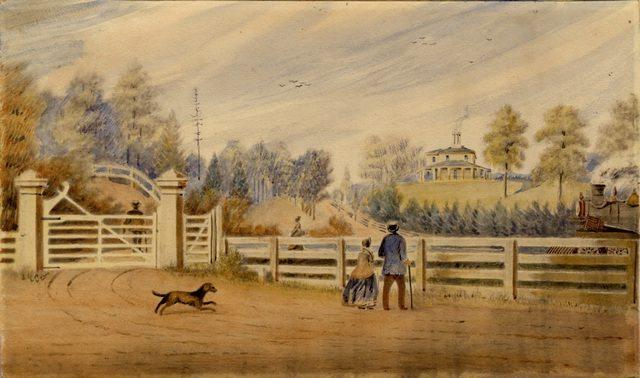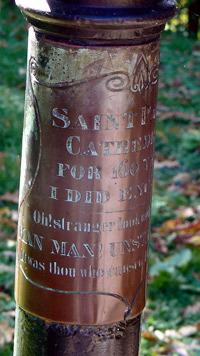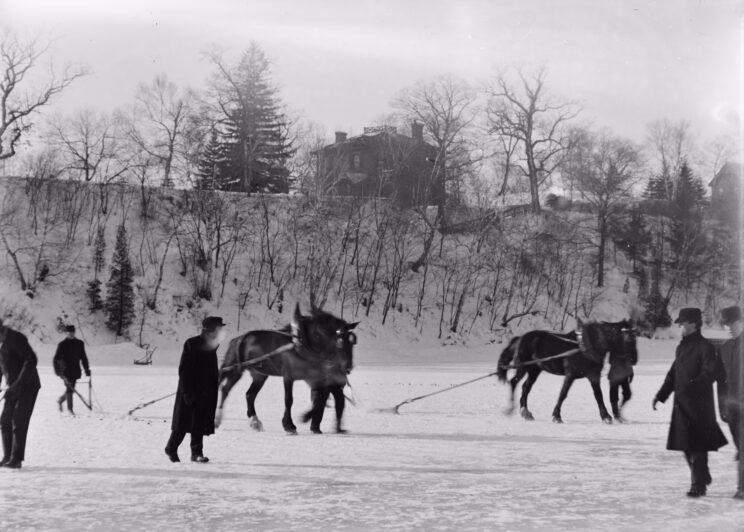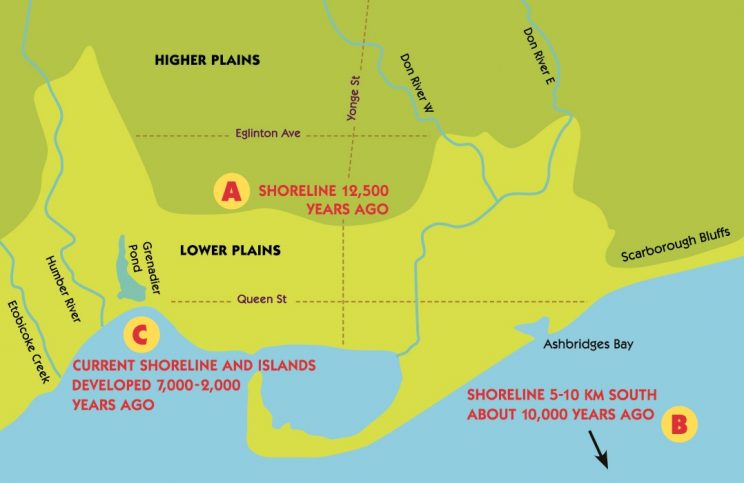Native peoples very likely used the High Park area when they settled in the Toronto region. Nearby, at the Humber River, a well-used trade route linked Lake Ontario and Georgian Bay, and another historic trail ran along the eastern side of Grenadier Pond.
TIMELINE
The following information was contributed in part by Toronto Culture Division, Colborne Lodge
1836 - Architect, engineer and land surveyor, John G. Howard and his wife Jemima, purchase 165 acres of land extending from Lake Ontario to Bloor Street. Because of the height of land overlooking the lake, the Howard’s name their property High Park.
1837 - John Howard designs a Regency-style picturesque cottage on the south end of the property and names it Colborne Lodge. The Howards move in in December. In time, Howard acquired another large parcel of land nearby. This property was bounded by the Queensway, Bloor Street West, Roncesvalles Avenue and Parkside Drive. Howard set himself up as a real estate developer, and laid out streets and lots for sale. He called the main north/south street in his development, Indian Road, because it followed the path of an ancient trail used by native people. Unfortunately, most people found Howard's development too far from the city, and sales were few and far between.
1873 - The Howards and the City of Toronto reach an agreement to deed High Park as a public park. The Howard stipulations include: leaving the estate in as natural a state as possible; that the park remain free in perpetuity to the citizens of Toronto; and the name High Park be retained.
1876 - 120 acres of the Howards’ original property becomes public property and forms the nucleus of the current park. The southern 45 acres, including Colborne Lodge, remain Howard property until their deaths. The city purchases 172 acres to the east of the Howard property from the Ridout family.
1876 - Jemima Howard dies and is buried in the tomb northwest of the Lodge.
1890 - John Howard dies and is buried alongside his wife beneath a secluded monument near Colborne Lodge. The remaining 45 acres of property, Colborne Lodge and its outbuildings and the tomb are transferred to the city. Not long after his death, the city extended streetcar service into the park, and the home buyers Howard had long waited for, began to arrive
1893 - The first boat rentals are available on Grenadier Pond.
1893 - The animal paddocks are established.
1900-1914 - The neighbourhoods around High Park grew rapidly during a period of wide-scale construction in the city. Today, these neighbourhoods are highly sought after for their well-treed streets and substantial old homes. The commercial strips along Bloor Street and Roncesvalles are alive with shops and restaurants, making the area a vibrant and highly-livable part of the city.
1930 - The city purchases 71 acres to the west of the park (formerly part of the Ellis estate), encompassing all of Grenadier Pond within the park boundaries.
1960s - A large number of recreational facilities are added to the park.
1990s - The city and province conduct studies and embark on programs to restore and preserve the ecologically significant environment, continuing the legacy established by the Howards in the 19th century.
The Establishment of Toronto’s High Park
Prepared by: Colborne Lodge, Toronto Cultural Services
In 1873 John and Jemima Howard signed an agreement to convey High Park, their country property, to the City of Toronto to be maintained as public parkland. Three years later, in 1876, the City took ownership of 120 acres of the Howards’ 165 acre estate. The Howards retained ownership of Colborne Lodge and the surrounding 45 acres until John’s death in 1890.
The Howards purchased their lakeside property which stretched from Lake Shore Road to Bloor Street in 1836, four years after immigrating to York (Toronto) from England. Howard, a trained architect, engineer and land surveyor, designed a small Regency-style picturesque cottage at the south end of the property. They named this cottage Colborne Lodge in honour of Howard’s patron, Sir John Colborne, Lieutenant-Governor of Upper Canada from 1828 - 1836. They called the property High Park because of the height of the hill overlooking Humber Bay and Lake Ontario. John and Jemima lived on and off at Colborne Lodge and their home in the City until John’s retirement in 1855 when they moved back to the Lodge permanently.
The Howards were avid gardeners and planted orchards and extensive gardens around their home and tomb. In John Howard’s 1883 diary he recorded that he had counted 10,993 spring bulbs in bloom. They also farmed portions of the land, and rented out a section of land south of the current Grenadier Café to tenant farmers. Primarily though, the land was kept in a natural state throughout which they both enjoyed walks and carriage rides, and John hunted. They also erected a small boat house on the shore of the southeastern cove of Grenadier Pond which was included in their property. The Howards and their friends sailed and fished in the pond, and in the winter skated and harvested ice blocks from it.
Prior to the conveyance of the property, Howard recorded in his diaries numerous requests from charitable organizations to picnic on the property. Howard himself supported a number of charitable organizations, and in an 1873 letter to the Globe, he wrote “In my donating High Park to the City of Toronto it is distinctly stated that ...the grounds are to be kept select, for the wives and children of the mechanics and the working class generally, also the Sunday School children and the different charities picnics.” It was this desire to provide a haven of natural, largely undisturbed woods and parklands for those who could not afford their own country properties that prompted the Howards to stipulate in the agreement, that High Park be held by the City as a "Public Park for the free use benefit and enjoyment of the citizens of the City of Toronto forever."
The Howards’ property formed the nucleus of the public park. In 1876, the City purchased 172 acres abutting the Howards’ property on the east side from the Ridout family. The western section, formerly part of the Ellis property, was purchased from the Chapman estate in 1930. This 71 acre section included the remainder of Grenadier Pond. Two further acres were added to the park in 1967 when the Village of Swansea was amalgamated into the City of Toronto. Approximately 11 acres along the southern edge of the park were removed in 1972 for the construction of The Queensway.
Sources
See also
- Indigenous History of High Park
- History of High Park Forest School
- Historic Photos of High Park on Facebook
- The Dream in High Park, article in Seasons Magazine, Autumn 1997
- John Howard’s Enduring Monument - Torontoist.com article about the founding of High Park
- What High Park used to look like - blogTO article with historic photos
- How High Park became Toronto's "country" sanctuary - Toronto Star article, April 7, 2016
- Torontoist article. Historicist: The Grenadier Ice Company. Ice harvesting. January, 2011.























